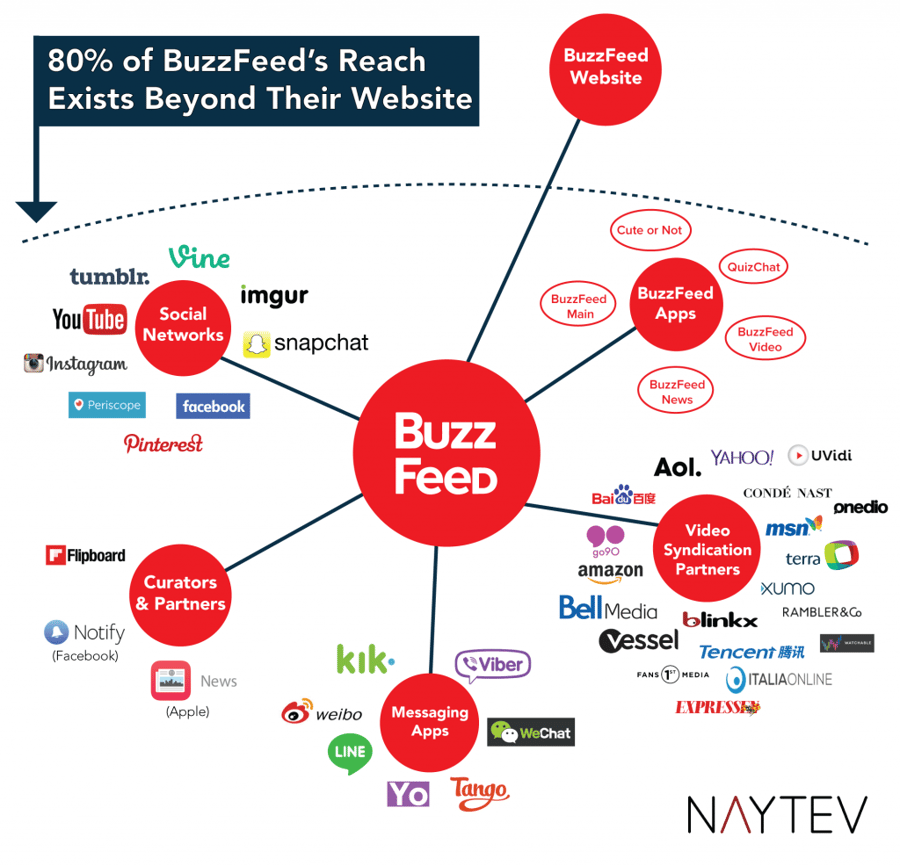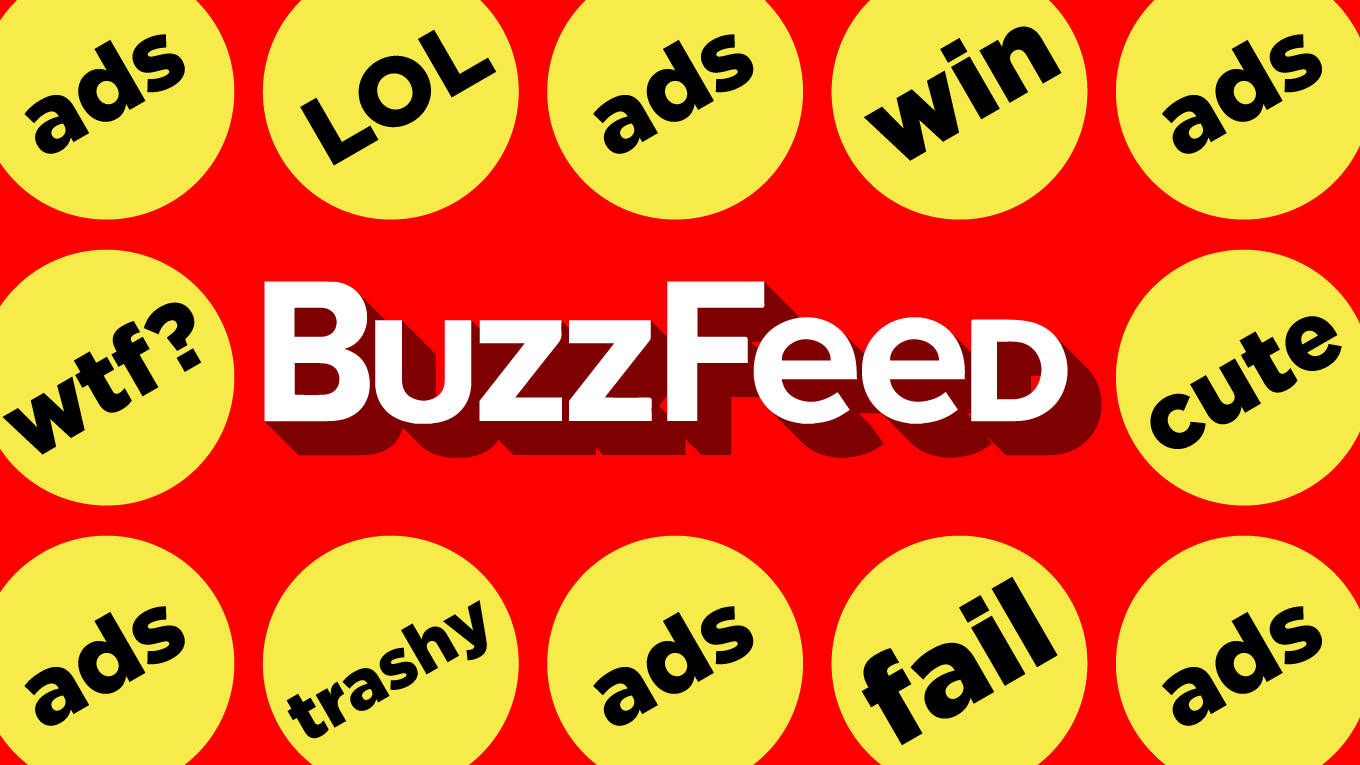BuzzFeed is a New York-based Internet media organization established in 2006 by the entrepreneur Jonah Peretti. Known for its shareable news posts, quizzes, digital media strategies and it’s signature “listicles,” BuzzFeed has developed to incorporate 11 versions—from Australia to Mexico—and has brought $496 million up in capital as of January 2017, comprising an arrangement with NBCUniversal that incorporated a $400 million investment more than two rounds.
The Company
Although BuzzFeed formally launched in November of 2006, the organization’s story starts well before. In January of 2001, pursuing his postgraduate study at the MIT Media Lab, Jonah Peretti sent an email discussion that happened between Nike and himself to his friends. The email contained a discussion between Peretti and Nike about whether Peretti might have a “sweatshop” word printed over his customized Nike iD shoes. Those friends sent the email to other people, who sent it to other people. It went viral and hence, arrived at a large number of individuals, grabbing the eye of tech blog Lot 49, the San Jose Mercury News, Village Voice, TIME, the Guardian, the Independent, MetaFilter, Slashdot, Salon, the Wall Street Journal, and ultimately The Today Show, where Peretti discussed labor policy with Nike’s head of advertising.
“I never expected my conversation with Nike to be so widely distributed; the email began to proliferate without my participation,” Peretti stated in April of 2001.
He continued:
“Although the press has presented my battle with Nike as a David versus Goliath parable, the real story is the battle between a company like Nike, with access to the mass media, and a network of citizens on the Internet who have only micro media at their disposal… The only force propelling the message was the collective action of those who thought it was worth forwarding… My guess is that in the long run, this episode will have a larger impact on how people think about media than how they think about Nike and sweatshop labor.”
Encouraged by this experience of going viral on the social media, Peretti continued to work in “contagious media”, initially working on a few satirical websites with his sister, Chelsea Peretti, and then later on founded “The Huffington Post” along with Ken Lerer and Arianna Huffington in May of 2005.
While working at The Huffington Post, Peretti started experimenting with “contagious media” as a side project. As per Peretti, “BuzzFeed started as a lab with a small team where we would play with ideas.” The project was called “Contagious Media, LLC” initially. Publishing its first article in September of 2006, the company was launched the following month. In just six years, the website had grown to have 30 million monthly visitors, friends, family, and referrals being the significant sources. By December next year, the number of new monthly users had risen to over 130 million.
BuzzBot, an instant messaging client, was one of the projects from the initial times. The main idea was to create such an algorithm that will filter out the most content of a specific day and send them to the user. While this idea turned out to be unscalable, the company modified the project a little and built a website with just the most popular content, filtered out using BuzzBot. After some experimentation, they found that while using only the algorithm worked moderately, having an individual and the algorithm provided the best results.
By targeting different target markets, becoming viral through numerous memes, “listicles”, and exciting posts, Buzzfeed went from a content sharing messenger to the currently booming website.

Content Strategy of BuzzFeed
Unlike traditional news organizations, wherein the main editors and journalists still decide what subjects to cover, the majority of BuzzFeed’s content is based on a sophisticated feedback loop, which starts with the concept of ‘viral’ content. The content becomes viral roughly when it is shared through social networks or email to the extent that it gains its own momentum and accrues huge volumes of views in a short period without additional marketing.
Traditionally, these were short, humorous videos or animations, but any shareable content can “go viral”. Social media analytics are used to identify subjects and stories that are going viral on the internet. The editorial team then produces and publishes articles around these topics, some serious, many irreverent. In addition, users can post directly to BuzzFeed via its Community section. Popular articles are promoted more heavily on BuzzFeed’s website and mobile apps in order to maximize audience reach and social media sharing. All the data and learning is fed back into the loop.

Most of BuzzFeed’s content is made up of frequently changed bite-sized articles, heavy on images and photos with relatively little text. This makes them quick to digest, especially over smartphones, which are increasingly a primary channel for BuzzFeed’s target audience, and ideal for sharing. This taps into what CEO Jonah Peretti calls the “bored at work” and “bored inline” networks, meaning people seeking a few minutes’ or even a few seconds’ entertainment or news. BuzzFeed’s strategy recognizes that many users will engage with its content only briefly, albeit frequently. According to the company, around two-thirds of its consumption is via social media networks, notably Facebook on which BuzzFeed has around 3.5 million fans, and one-third direct to its own properties.
Also Read: Netflix – Creating A Winning Brand Strategy
Business Model Canvas
Key Partners
|
Key Activities
|
Value Propositions
|
Customer relationships
|
Customer segments
|
|
Key Resources
|
Channels
|
||||
Cost Structure
|
Revenue streams
|
||||
Jonah Peretti’s tips for online content sharing
- Storytelling – People are much more engaged and open to sharing when they hear stories, as opposed to content articles only filled with information
- Humour – The best way to connect, share and go viral is to make your content humorous
- Connect with people’s identities – In the virtual world, what you share is essentially a part of your personality. Creating content that people can relate to makes it more prone to getting shared
- Respond to events – Keep track of what’s happening globally and make your content relevant to that. People are more likely to share content related to the current situation in the world as that leads to the feeling of belonging.
- Think socially – Keep the mindset of the user who’ll be sharing your content with others. Don’t create tricky, complicated, or humiliating content that users might get embarrassed sharing.
- Tap into shared emotions – Keep the EQ (emotional quotient) high when creating content. The emotions triggered by the content is more important than the actual matter within the content.
- Measure results – Creating the best content is not enough. Make use of the analytical data available, and keep modifying your strategies according to the user behavior
- Know your platform – Only writing the content is not enough. You’ve to consider the platform and how to utilize its features to your maximum advantage.
Note-worthy strategies and ideas
- Readability of the content – As entertainment is the main factor for BuzzFeed, simple and easy to read and understand is highly appreciated by any user.
- Quizzes – Interesting and engaging quizzes are a great way to increase likes and shares. People who are bored at work or want to escape their everyday routine consume these quizzes enthusiastically.
- Timing of the content – Going viral is the most significant factor for BuzzFeed. BuzzFeed often shares content on things that are already going viral. So while it may look like riding on the coattails, it is also highly effective.
- Showing ads in a creative way – BuzzFeed doesn’t show ads in the usual way. They display their sponsored items in such a way that users see them as regular content. The below three posts are all advertisements, but they’re shown in such a way that users won’t hesitate before opening and won’t be irritated by the advertisement of that particular brand.
- Nostalgic content – The feeling of nostalgia is much more influential than impressing them with the features or the matter. People often purchase impulsively due to their nostalgia. BuzzFeed utilizes this feeling of nostalgia perfectly.
BuzzFeed is emblematic of new media: responding quickly to trends, concerned more with what people want to read than with exclusives or breaking stories, and impossible to pin down into a certain genre of content (celebrity, entertainment, news, special interest). It is primarily aimed at a young, mobile-using audience, with an app and a heavily mobile-optimized website delivering largely text-light content. Content is designed to be highly shareable, again aimed at young people whose discovery channel begins with social media. It suggests a different way of satisfying the requirement to facilitate debate on news and current affairs and cover news in the UK and around the world: reporting in a digestible, entertaining form, not formally different from the entertainment that Buzzfeed offers.



